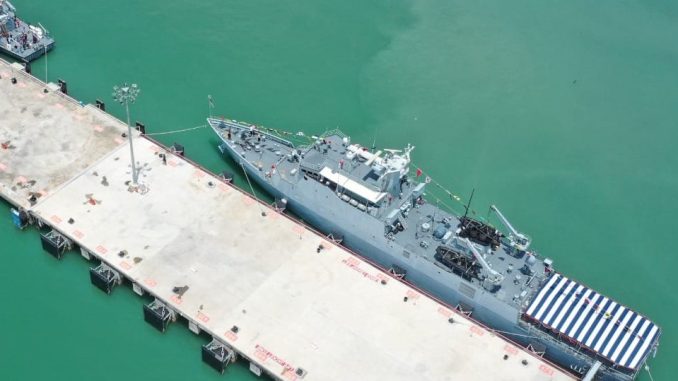
SHAH ALAM: In the release on KD Perkasa, RMN Chief Engineer Rear Admiral Mohd Shaiful Adli Chung stated local shipyard are fully capable of building ships without outside help apart from a full fledge combat management system (CMS).
He also said several local design houses, are capable designing ships, especially non-combatants. He stated that the procurement of ships locally was cheaper, albeit without the CMS. One-third the cost of building a ship locally from a foreign design and one-fourth the price of foreign-built and designed hull. (See below).
Success Story OP KD PERKASA ini membuktikan bahawa:
1. Limbungan tempatan berkeupayaan penuh untuk membina kapal bersaiz kurang dari 80 meter tanpa perlu bantuan pihak luar negara, kecuali full-fledged sistem kombat.
2. Terdapat beberapa design-house tempatan yang mampu merekabentuk kapal dengan baik, khususnya kapal jenis non-combatant.
3. Rekabentuk in-house membolehkan lebih banyak produk pribumi (indigenous product) serta bahan tempatan yang type approved digunapakai, berbanding jika menggunakan rekabentuk limbungan luar negara yang dikesan menetapkan syarat yang ketat.
4. Kos perolehan tanpa sistem kombat bagi sebuah kapal berdasarkan rekabentuk rakyat Malaysia dan dibina oleh limbungan tempatan adalah lebih kompetitif iaitu lebih kurang:
4.1 Satu pertiga (1/3) kos perolehan jika menggunakan rekabentuk luar negara, tetapi kapal dibina di Malaysia.
4.2 Satu perempat (1/4) kos perolehan jika berdasarkan rekabentuk limbungan luar negara dan kapal dibina di premis mereka.
5. Peningkatan penglibatan pemain industri Bumiputera di projek ini.
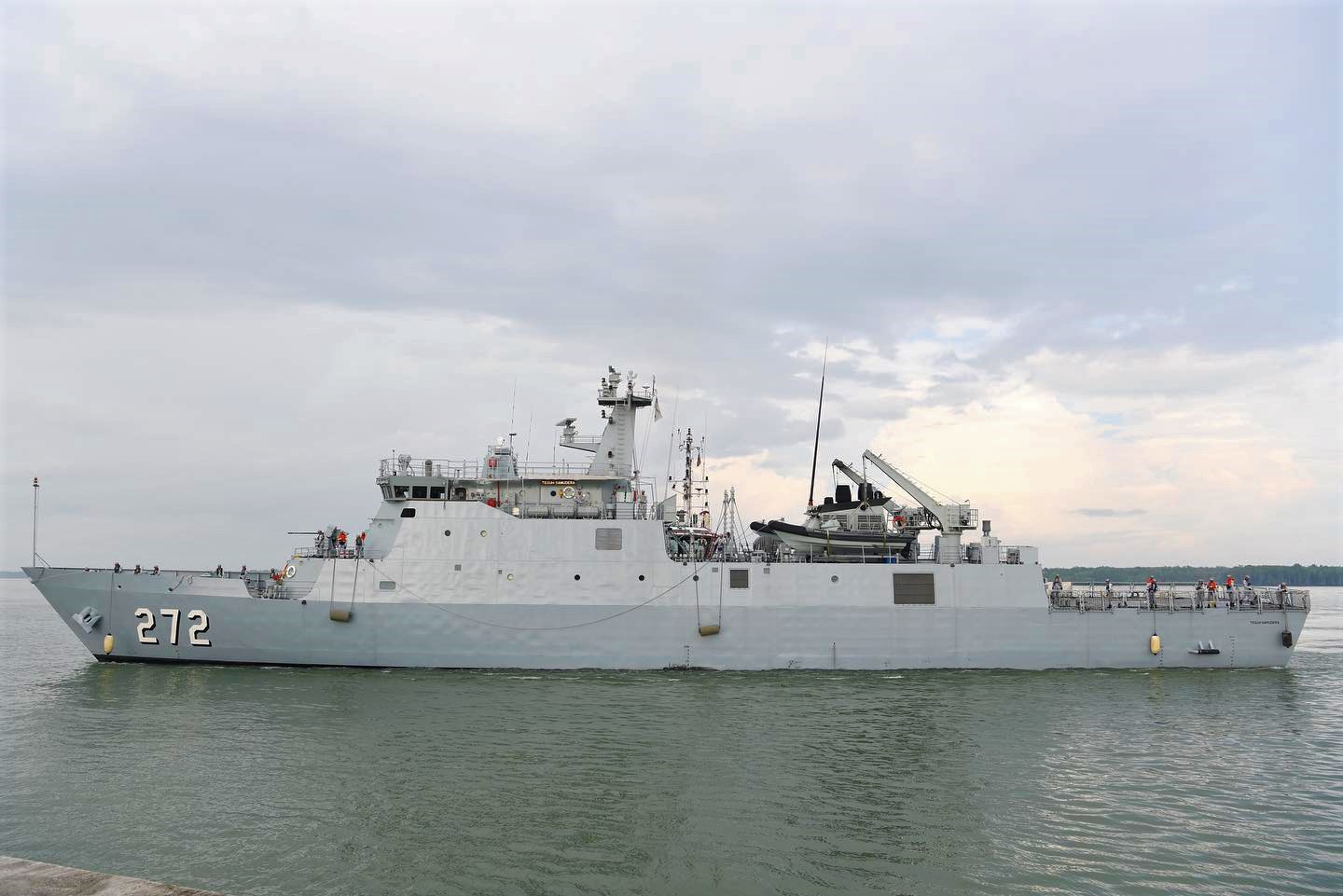
I cannot confirm the veracity of the Rear Admiral statement on the cost, but it must be noted that even if a ship is built locally to a foreign design, most of the major equipment and steel plates will still need to be imported.
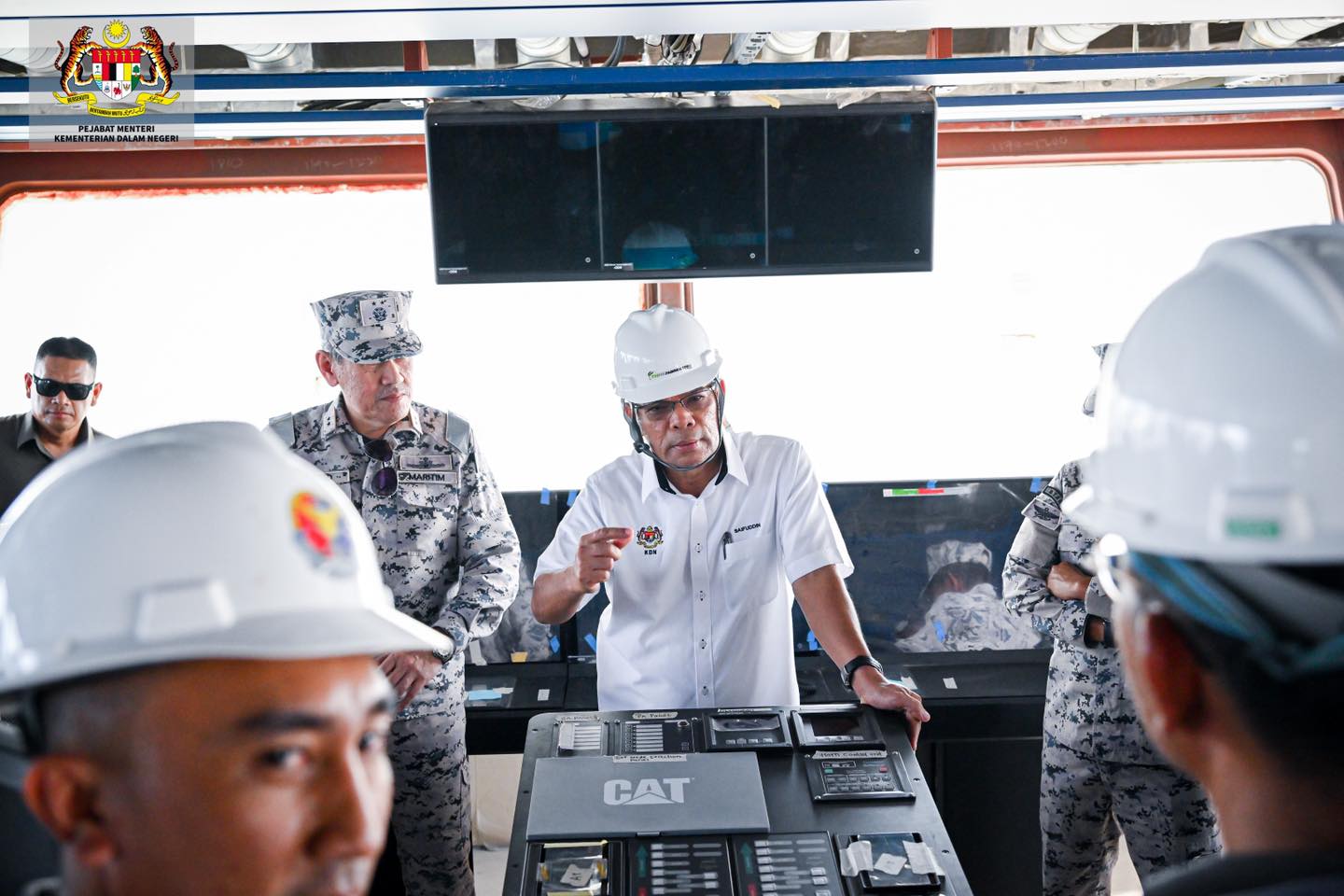
For the record, apart from the LCS and Kedah class, two other foreign designs were built locally in recent times, namely the Damen 1800 OPV for the MMEA and the Gagah Samudera class, designed by DSME of South Korea, soon to be called Hanwha Ocean.
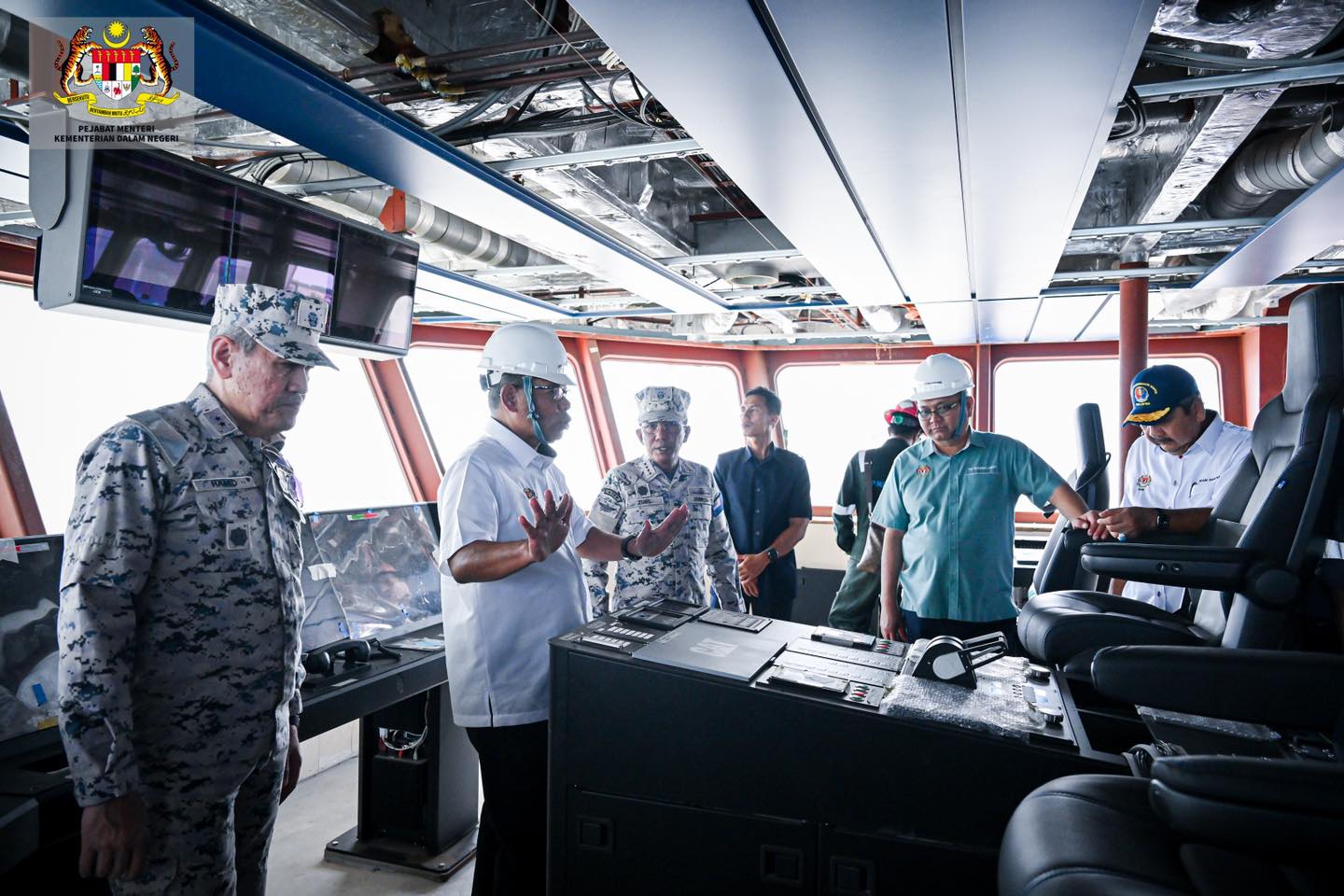
Anyhow, the MMEA OPV is 83 metre in length, with a width of 13.7 metre. The Samudera class ships are 76 metres long with a beam of 11 metres. I believed the MMEA OPV is not fitted with a CMS while the Samudera is fitted with the Hanwha Naval Shield CMS. The OPV cost RM246 million each, based on the contract price of RM738.9 million, announced on January 19, 2017.
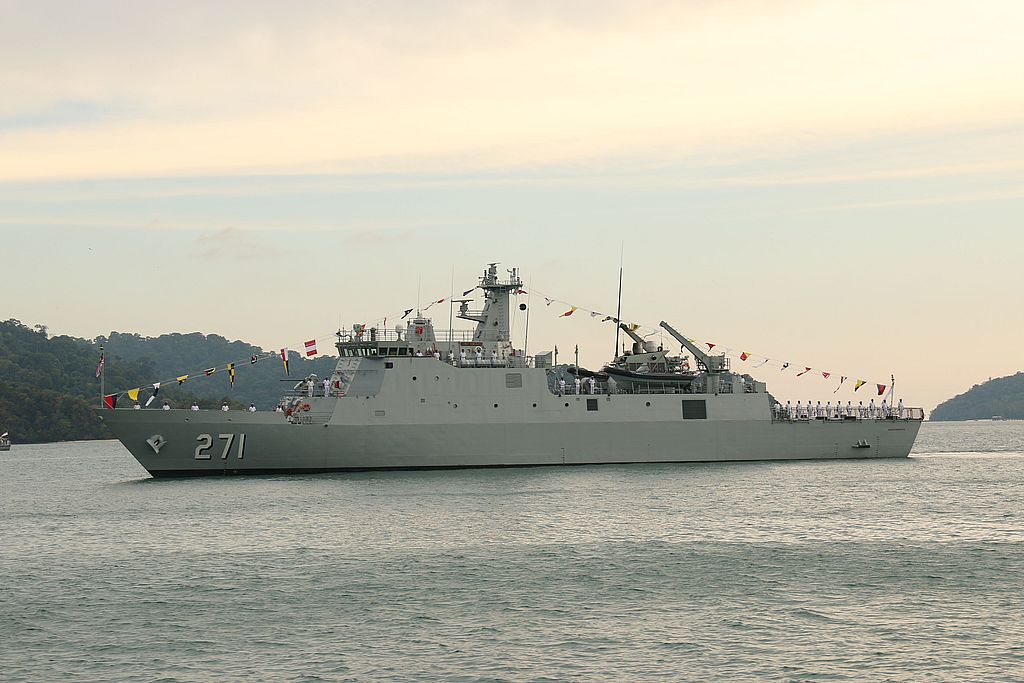
The Samudera costs RM147 million each based on the contract price of RM294 million announced in 2011. That said the cost of both class of ships has increased around RM20 million to RM50 million each, due to the delays in their completion and commissioning.
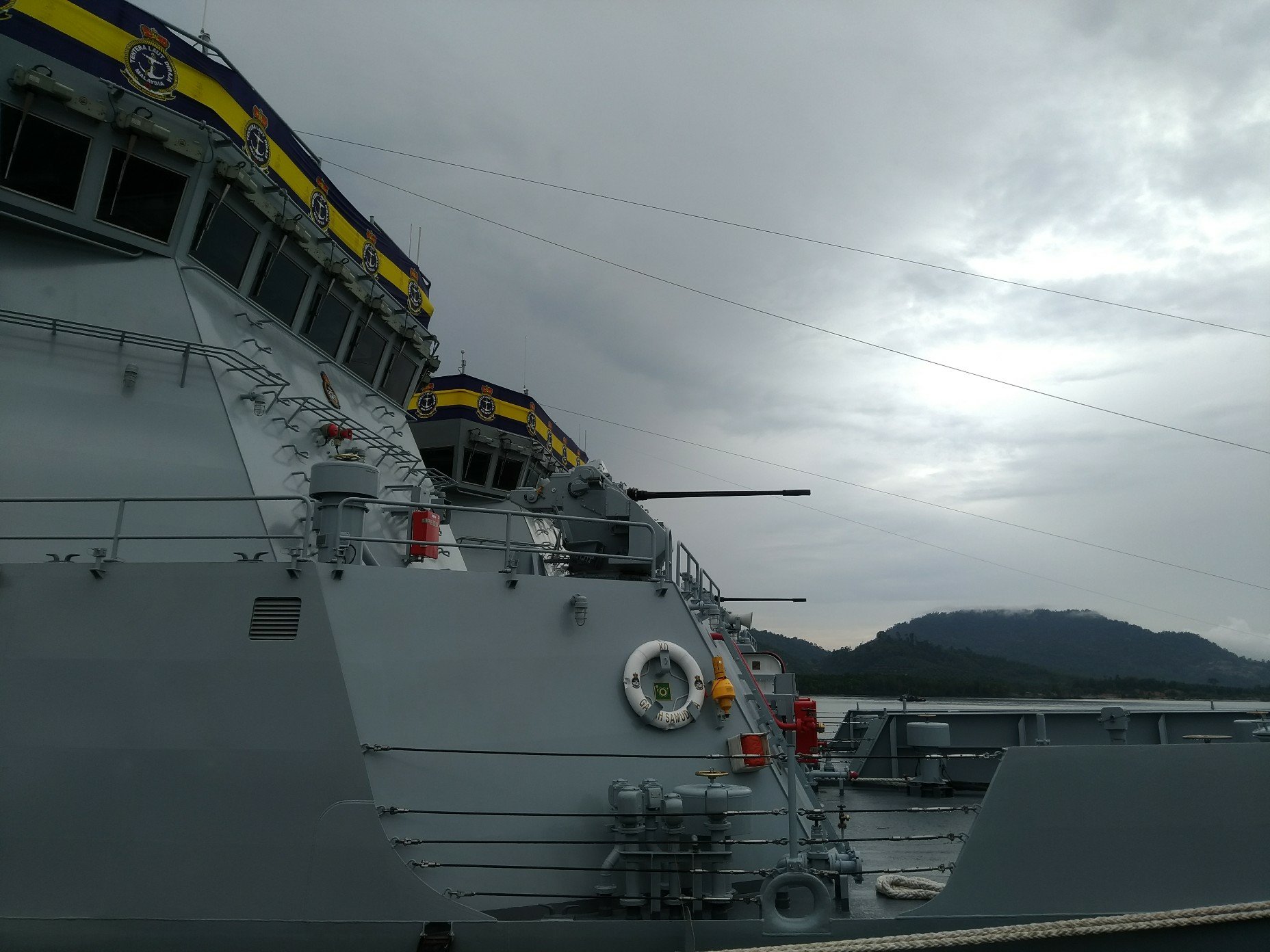
For a corvette/light frigate size ship, the Hanwha Naval Shield CMS cost around US$5 million (RM22 million) per ship, based on the latest news about a contract with the Philippines Navy.
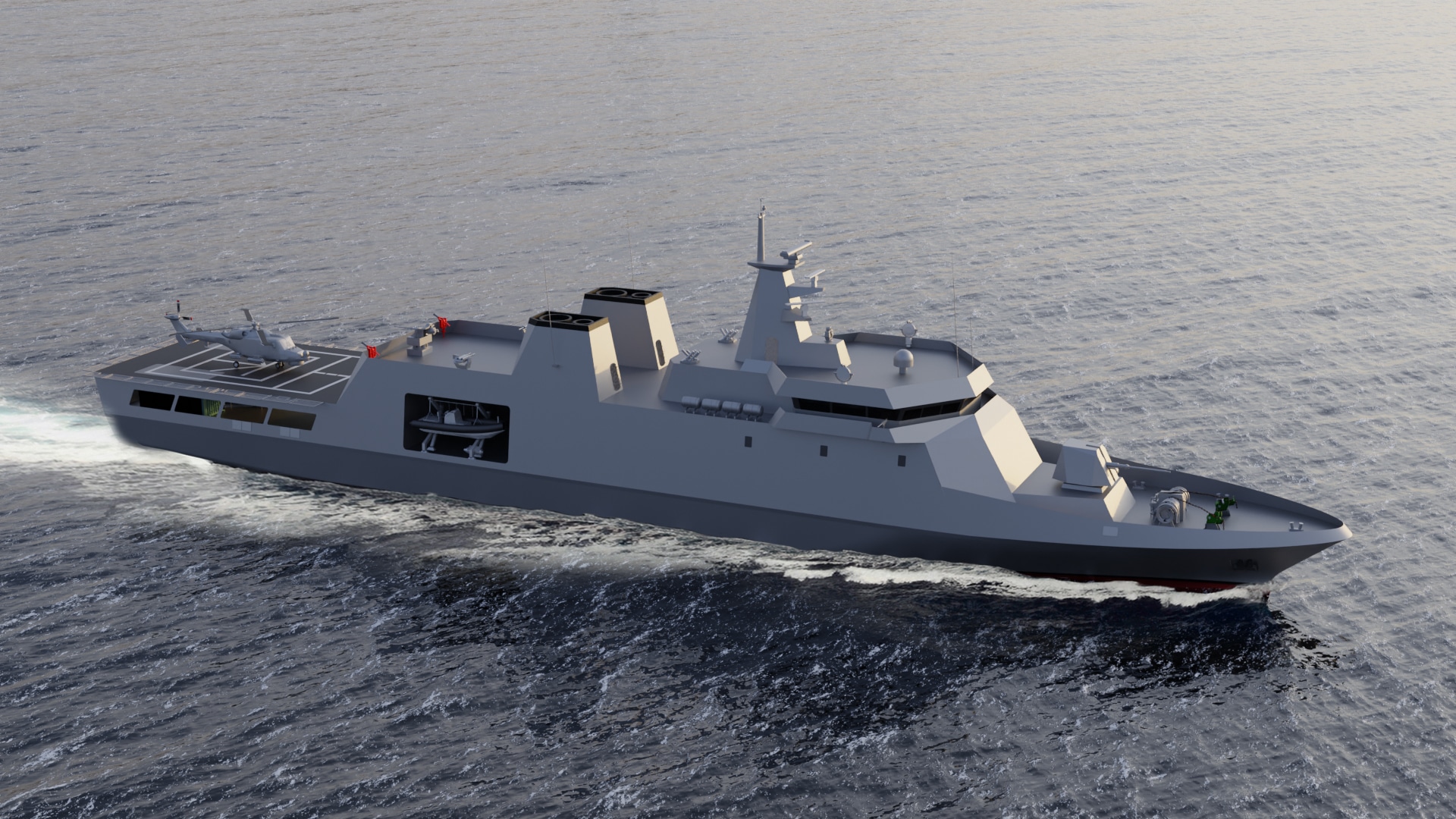
Several years ago, the-then Philippines Defence Secretary told the country’s parliament that the Thales Tacticos CMS cost US$7 million (RM31 million) per ship.
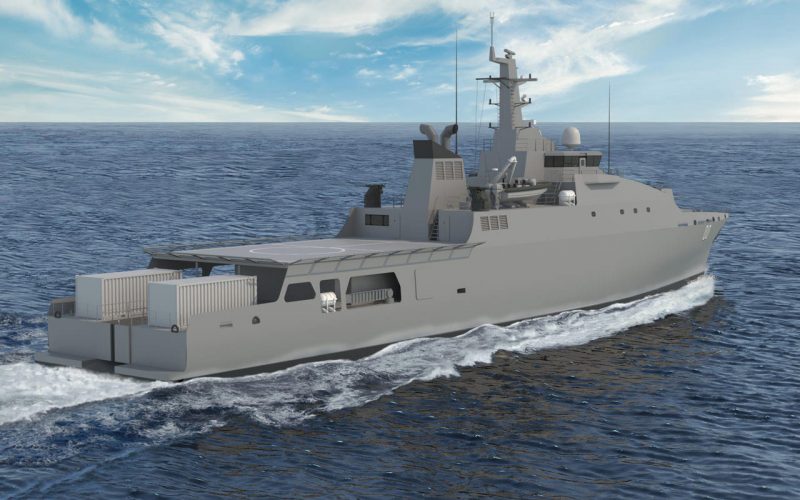
Based on the above figures, we can extrapolate that a Samudera sized ship – 76 metre in length – equipped for combat instead of a dedicated training ship with a 76mm gun, four SSM launchers and two twin VSHORAD launchers – may well cost around RM250 million if built locally. Add another RM30 million or so if a RAM missile launcher is fitted instead of the VSHORAD launchers. It will cost around the same price if built in South Korea, I believed.
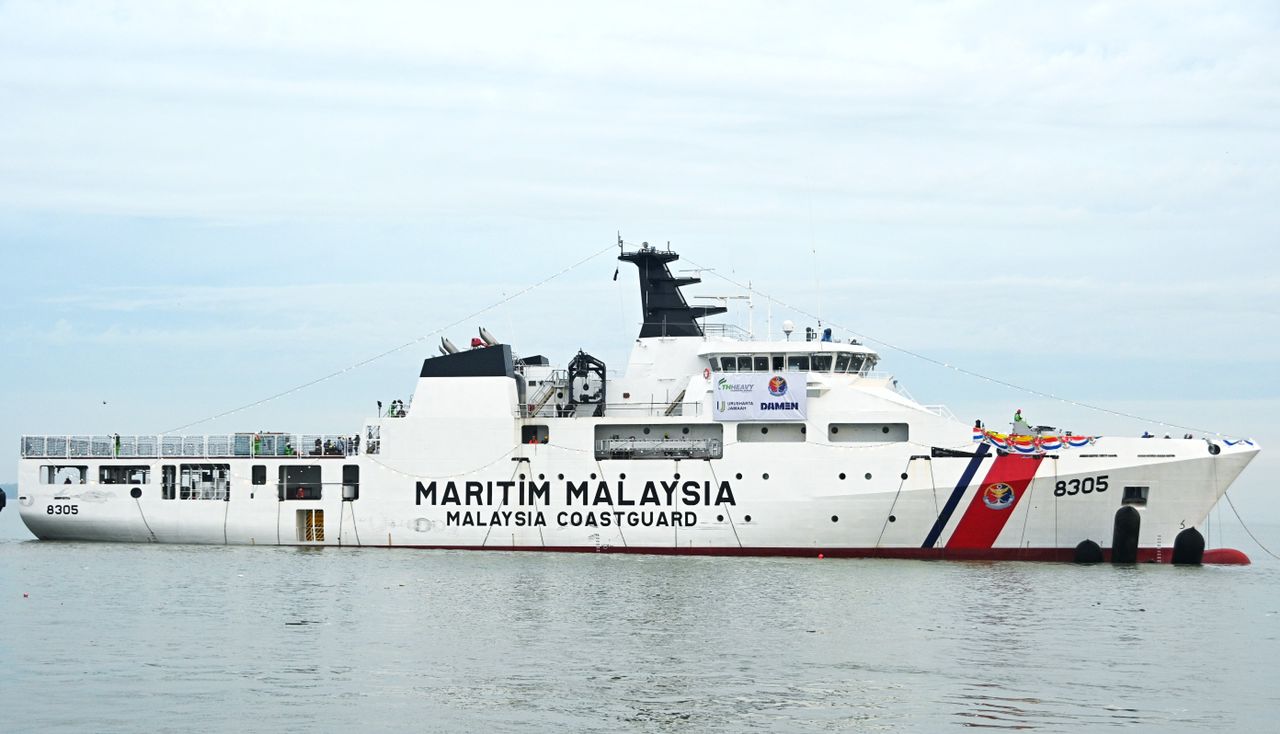
If we were to build the military version of the Damen OPV – with higher DC controls and same weapon loadouts, it will cost around RM350 million or so. It will be the same price if we built it in Europe.
— Malaysian Defence.


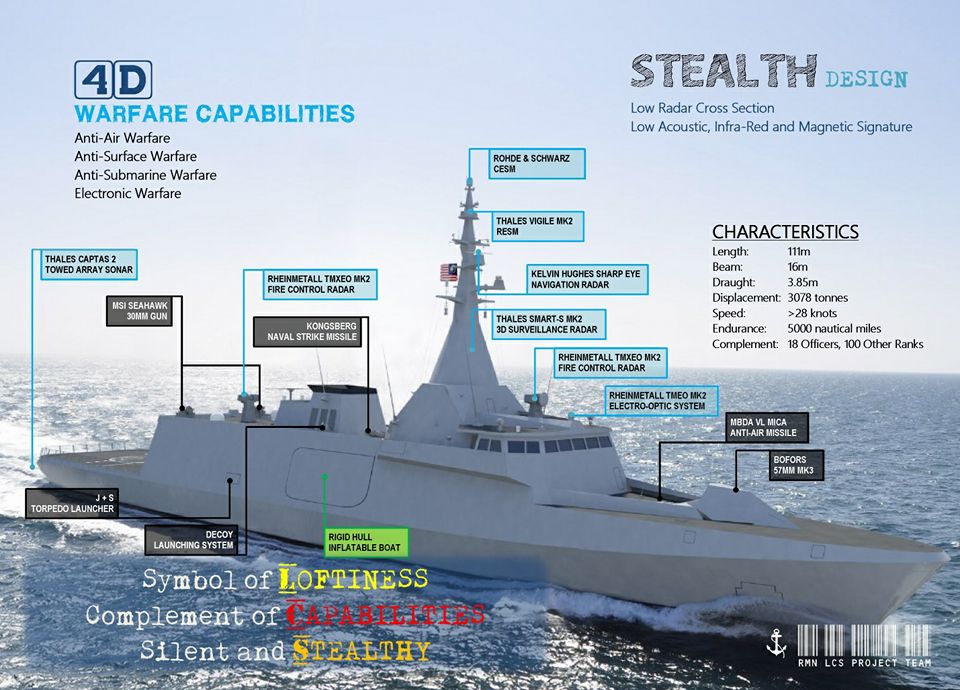
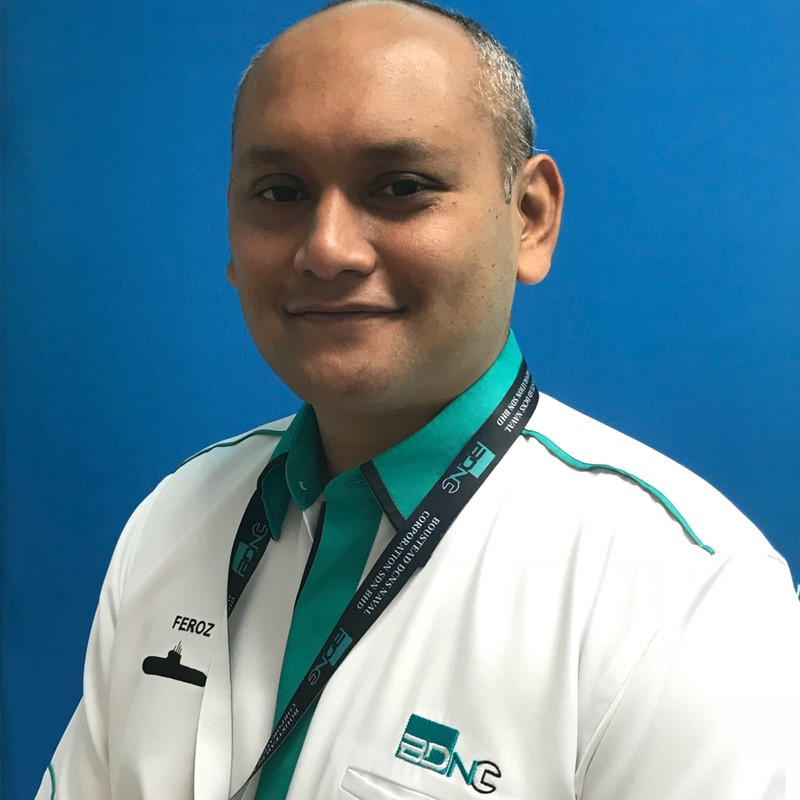
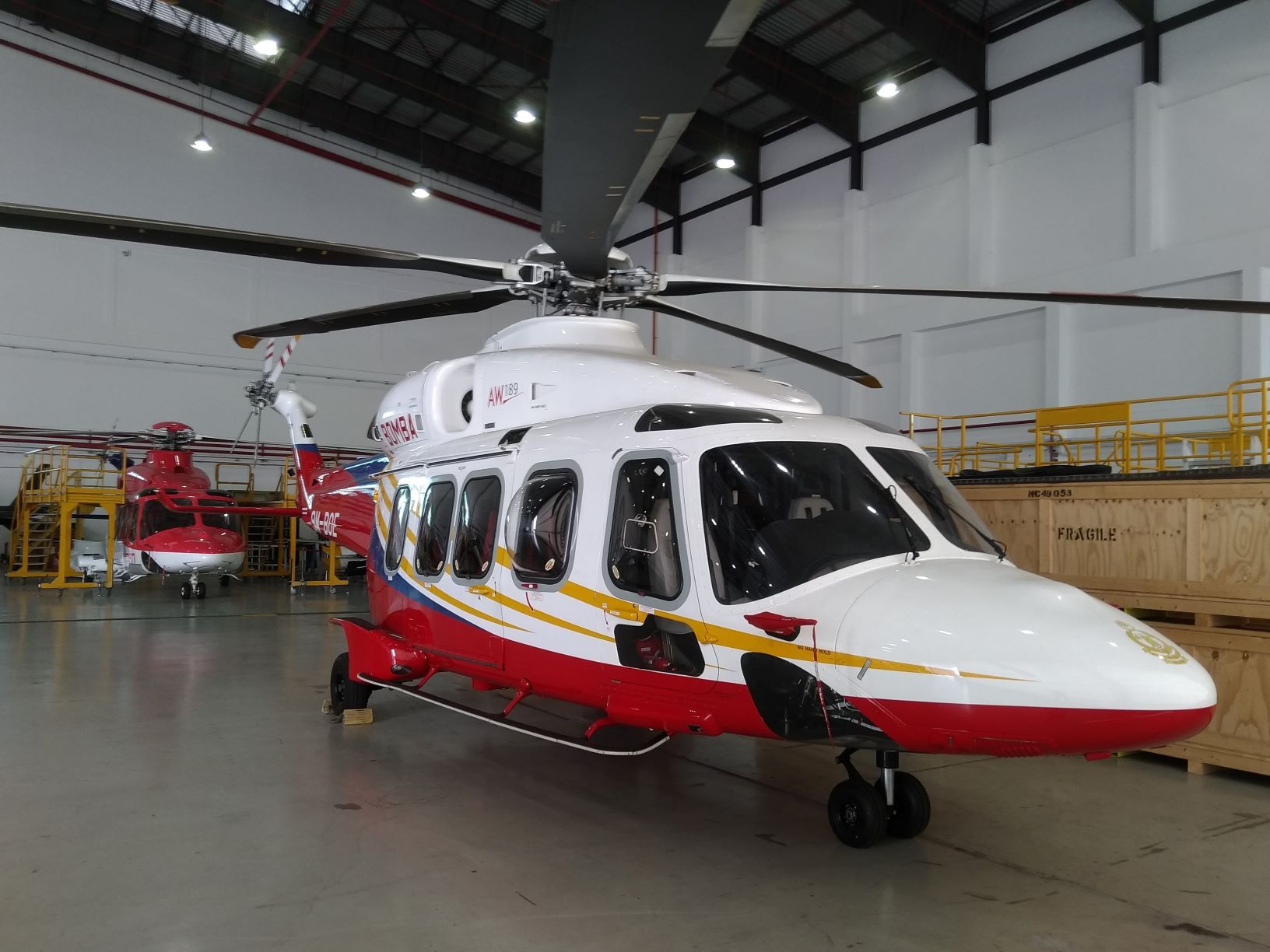
That’s assuming the ship is made using military grade steel and military ship standard. Ship made using civilian grade steel (of which we’re capable of making) and aluminum would be cheaper to make
Aluminium is hard to work especially for the hull. And they need specialised welders.
In usual commercial world, if you buy a franchise, you have to buy the materials from the franchisor’s list of supplier (which usually has been marked up). You cannot buy the material from other source even though its the same quality.
I would think if you buy a foreign design, not only you have to pay higher cost for the design, but also for all other materials like steel (which they will specify you need to buy from certain vendor at marked up prices). If you say you want to buy the steel from another cheaper vendor, the designers can wash hand and say they don’t guarantee the quality.
Yes, that was the case with the MMEA OPV and Samudera class ships. It also happened with LCS and Kedah class, but in the roundabout way
As now we are explicitly discussing about price.
RAM is one of the most expensive CIWS missile out there. Each missile cost USD1 mil. So even the cost of a fully loaded RAM launcher (21 missiles) without considering of the cost of the launcher itself, that is at least USD21 mil or around RM94.5 million.
A reason why ADA class of Pakistan and Ukraine the RAM system is swapped with the Aselsan GOKDENIZ 35 mm CIWS, which is a cheaper option.
As for the ship itself, I believe we could build a copy of the Gagah Samudera at less than RM150 mil each.
Indonesia build their 80m OPV for BAKAMLA in Batam for a total Rupiah 601 miliar (billion) for 3 ships, which converts to today’s money of around RM60.1 million for each ship.
https://daerah.sindonews.com/berita/1362449/194/berbiaya-rp601-miliar-bakamla-luncurkan-3-kapal-patroli-buatan-batam
https://bakamla.go.id/uploads/gallery/DJI_0069.JPG
I believed the Bakamla ships were also offered to us when they were looking around for an OPV, which of course went to THHE. That ship was supposed to be built at a new shipyard that was supposed to be set up, I believed in Pengkalan Chepa, Kelantan.
… – ” military ship standard”
‘Military ship standard” only entails a certain level of DC.
… – ”As now we are explicitly discussing about price.”
Something rotutinely done over the years; some have a penchant for.
… – ”RAM is one of the most expensive CIWS missile out there. ”
Never mind the price. What is RAM’s measure of success compared to a gun based CIWS? I have no idea as it’s yet to be tested for real. RAM actually is intended to be part of a multi tiered system but of course for some navies it’s the only or main form of defence. What I do know is that a ship and it’s crew are also expensive and take time and resources to replace; thus the price of a CIWS and whether it’s ”expensive” should take this into account.
As for missiles the only ones actually tested for real against incoming ASMs is Sea Dart [against Iraqi Silkworms] and Standard [against Houthi Chinese made ASMs]. Seawolf achieved success during trials against 4.4inch shells and against [non VLS version] Argie aircraft but never against ASMs.
P.S. Neither the MMEA’s OPVs or the RMN’s pair of South Korean training ships have a CMS; they have a FCS. For that matter neither did the Marikhs or the FACs.
It was Hanwha who said on record that it had supplied the CMS for the training ships. This was in response to the CMS issue in the Philippines Navy frigate.
Granted. My mistake.
“local design houses, are capable designing ships, especially non-combatants”
Maybe so but whats that got to do with TLDM. A ship with no combat roles should not have a place in their fleet. Even Kedahs, fitted as an OPV now, still could be rearmed for combat duties, but an OPV1800 in TLDM fleet has no role when the shooting starts as it has limited capacity for rearm.
“Samudera sized ship – 76 metre in length – equipped for combat”
Might just work since Samudera were from a military ship lineage but the issue is who holds the IP rights (I believe there is a local IP holder as with all our local constructions), and if we could restart production of a ship 10 years after the initial class were started, and with another shipyard. Another question if TLDM want such a ship, as they might prefer a bigger, more potent boat, in liew of waiting for LCS to complete and maybe no more further LCS follow on.
Ultimately, the question is not whether we should or should not build them here. We have the knowledge & manpower but the major failing isn’t the human capital, its the unrealistic budget and inept management of the whole thing. Thats also when certain people see loopholes for them to make a profit themselves.
I did not mention the IP rights as it is superfluous to the discussion. Furthermore, it’s a waste money really to own the IP rights.
”Maybe so but whats that got to do with TLDM. A ship with no combat roles should not have a place in their fleet.”
Maybe he’s referring to target towing vessels; tug boats; a replacement for the FTVs, etc.
”Even Kedahs, fitted as an OPV now, still could be rearmed for combat duties”
They should but unless extra funds are allocated the RMN would prefer that what funds it has are channeled towards new assets. Also, as noted before the class only has deck space for a modest self capability in the form a non deck penetrating launcher in the B position and 4 ASMs amidships. Anything else would require redesign/engineering work which costs a lot and is why previous fesablity studies[one years ago and another more recently] which were sent for consideration went nowhere.
”an OPV1800 in TLDM fleet has no role when the shooting starts as it has limited capacity for rearm.”
Which is precisely why the RMN has no intention to get a guns armed only combatant [whether primary or secondary] or a OPV and why it fought so hard to ensure the LMS Batch 2s are fully fitted out; even if modestly.
”Thats also when certain people see loopholes for them to make a profit themselves.”
The very nature of the system enables ”certain people” ”to make a profit themselves” – defence procurement is part of the patronage system; as intended by a former Prime Minister and now part of the system.
“the IP rights as it is superfluous to the discussion”
Why I mention that is because, presumably there exist such an arrangement, if we want to continue making this class of ship, we need still to at least get the legal consent from the local IP holder even if the intention won’t involve them. It doesn’t matter if they (PSC?) no longer in the shipmaking business, as legally they own the local rights to the Samudera design.
Its like if you want to make new Lat comics, even tho the author has long retired, you still need to get his legal permission to draw & sell new creations, regardless the storyline is your original idea or the characters look significantly different from OG.
Unless of course the Govt owned the rights to the design, and has legal freedom to choose whichever shipyard it sees fit (a second level of legality that could restrict the Govt to the shipyard of choice and/or parts suppliers as dundun mentioned).
I do not think NGV Tech had purchased the IP rights of the Samudera class. Anyhow, the company was foreclosed by Maybank.
“Maybe he’s referring to target towing vessels”
Civvie boats, no issues as these are made in local yards for civilian use after all. And none of them require a CMS anyways. Perhaps he should have highlight on which yards could make naval warships fit for LMS2 and other combatants. That is TLDM role & main focus after all.
“the RMN would prefer that what funds it has are channeled towards new assets”
Of course but at least the Kedahs are FFBNW and could be uparmed when such is provided, they have the space and CMS at least. Damen OPV otoh has limited room for uparming.
“defence procurement is part of the patronage system”
This is true for everywhere else, we’re not different. What made us fail is the overexpectation of making a purse from a p!gs ear for the price of paper. No one really cared how much money got siphoned if the project was successful.
… – This is true for everywhere else, we’re not different.”
Oh but we are ”different” and if you take into account the various programmes which have gone ratshit over the years [I’m not referring to the LCS, NGOPV and other well known examples]; plus all the machinations [if you’re aware]; you won’t say we’re ”not different”.
In other countries things tend to be delivered on schedule, on spec and within budget [yes I’m aware there are exceptions] and there are corrective mechanisms in place in addition to an opposition and press which asks the right questions.. Over here; like other sectors defence is part of the patronage system but quite often the end user and taxpayer gets buggered; not their money’s worth. Not to mention the inability or unwillingness to learn from previous mistakes. Over here the needs of the end user and taxpayer is secondary and the notion that it’s the government’s duty of care to adequately fund the armed services is apparently lost; as is the notion that the armed services must get some level of commitment from their political masters in order to plan/adjust accordingly; is apparently missing from the narrative.
One country that has a similar track-record like MY is Oz. It is instructive to note that the Australian programmes that has no difficulties and delivered on time and on budget were/are those under FMS.
… – ”Civvie boats, no issues as these are made in local yards for civilian use after all”
”’RMN boats” not ”civvie”. Most of our tugs, target towing and other auxiliary ships are ”RMN’; albeit not all are commissioned ships; irrespective of the fact that all/most were constructed in ”civvie” yards or bought from ”civvie” operators. . A school mate’s first command was Sotong so I’m know a bit about how we utilise/utilised various auxiliary ships.
Marhalim,
Yes and we indirectly had a hand in what became the Kaman Seasprite fiasco because they wanted a helo of a particular size to fit into the OPVs that Transfield was hoping to sell to us [for the NGOPV requirement] and the RAN :] We can also add the programme to modify the ex USN Newports which went over schedule and over budget which of course had no connection to us.
Marhalim “One country that has a similar track-record like MY is Oz”
Both inherited their administration system from the Brits and the Brits Military program themselves aren’t exactly a well oil machine.
Hulubalang “A reason why ADA class of Pakistan and Ukraine the RAM system is swapped with the Aselsan GOKDENIZ 35 mm CIWS, which is a cheaper option”
Pakistani & Ukrainian is a mark 2 version of Ada & has a VLS (redesigned paid for by Pakistan) compared to the Turks mark 1 version whose only had RAM as the primary missiles system.
Joe “Civvie boats, no issues as these are made in local yards for civilian use after all. And none of them require a CMS anyways. Perhaps he should have highlight on which yards could make naval warships fit for LMS2 and other combatants. That is TLDM role & main focus after all.”
We don’t have anything like that because we keep on rebooting & use different shipyard & different design, partners & suppliers every single time. For the last 2 decades we had gone from Brits to Germany to Korean to french & now wanted Turkish pulak. Meanwhile our next door neighbours had a continuous shipbuilding programme by a single yard who had small set of sub suppliers & thus can accumulate skills, technology and take advantage of economics of scale.
The rear admiral calculation show that local assembly has 30% higher price than building it in foreign yards. quiet on the high end of the normal localisation rates of between 5 to 30%. And we would keep on having to pay 30% more if we keep on rebooting. while ST engineering might just be paying a 5% markups.
Zaft – ”Both inherited their administration system from the Brits and the Brits Military program themselves aren’t exactly a well oil machine.”
Poppycock. We’re all from planet earth and Tom after decades still can’t catch Jerry. So?
Issues faced by various Commonwealth countries have little to nothing to do with their
colonial history. You’re seeing things which aren’t there and coming up with things which are flatly untrue…
Zaft – ”the Brits Military program themselves aren’t exactly a well oil machine.”
In planet earth which procurement system is defect free? Tell me… What about countries which don’t have a colonial legacy but have defence related issues? They inherited it from the the Wizard of Oz?
Zaft – ”We don’t have anything like that because we keep on rebooting & use different shipyard & different design, ”
As has been explained to you; the ”reboot” exists only in your mind. We went to BAE Systems for the Lekius [primary combatant] and to the German Naval Group for the NGOPVs [secondary combatant] not because of a ”reboot” but because both ships were intended for different purposes. Also, as has been explained to you; wasn’t our fault [as you erroneously claim] we have certain issues with certain companies; i.e. was it our fault that we were annoyed that Eurocopter was tardy in informing us about gearbox issues [read Alan Warnes article]?
Zaft – ”For the last 2 decades we had gone from Brits to Germany to Korean to french & now wanted Turkish pulak.”
So? Singapore has bought from the U.S.; France, Sweden, Russia, etc; so? Yes according to political imperatives we decided who to buy from and this has lead to issues but it’s not like we’re the only ones…
Zaft – ” Meanwhile our next door neighbours had a continuous shipbuilding programme by a single yard ”
A yard which still selects different foreign partners for different things which in your flawed narrative constitutes a ”reboot”… Instead of obfuscation and spins; why not say that unlike us Singapore has a well thought out and holistic policy based on a clear assessment of its needs and intended to benefit the end user…
One country that has a similar track-record like MY is Oz. (Tuan Marhalim)
It’s funny how many of us arrived at this same conclusion. I pointed this out sometime after a Raya ‘open house’ to an Aussie mate (Used to be a Singapore police officer) and he roared with laughter!
As I pointed out the problems Oz had with their defence procurements were mostly related to non-FMS stuff. The only recent FMS stuff that got into a pickle was the F-35A procurement but that was the programme as a whole and not the actual deal (This was like the F-111 deal decades ago). That said the stop-gap measure to deal with the delays of the F=35s, the purchase of the Super Hornets and the Growlers, went smoothly.
Just my suspicion/opinion, what the Admiral said regarding the cost could be that of locally designed and made civilian spec hulls vs foreign designed and built military spec hulls.
On the notion of RMN does not need a non combatant ship, RMN do still need some auxilary ship (like BM5 for example). But I would agree that RMN do not need to care about 50m-80m “non-combatant” gunboat that kind of ship would be more suitable to be used by the MMEA later on in the future.
For the price a locally built hull armed corvette, lets take the South Korean Yoon Youngha class ‘FACs’, Take all their weapons (76mm gun, 40mm gun, 4 ASh missiles, can replace with whatever gun and missiles RMN prefer) and sensors (radar, EO turret, decoy launchers and ECM), get the price of Damen OPV of usd60 million, add it with the price of the entire Yoon Youngha of usd38 million for sake of easy calculation, add another usd12 million for 2x Simbad-RC (twin mistral based on proce for Jose Rizal class) that would be a total of usd110 million for 1 ship, a little bit more that what Marhalim had calculated but still around the same ballpark. So will it be cheaper to make build this ship in Malaysia? I think not unless we build every component locally
Luqman – ”RMN do still need some auxilary ship (like BM5 for example)”
Does it really? AS it stands most of its tugs and other auxiliary boats have been sold off/retired and replaced and I doubt it needs any more ship similar the BM5 for ESSCOM.
Luqman – ”I think not unless we build every component locally”
First a design is needed. Which local yard actually has a design on hand?
Luqman – ”I would agree that RMN do not need to care about 50m-80m ”
Yes, despite the whines and moans of certain individuals the RMN has not had such a requirement for quite a while now.
Luqman “So will it be cheaper to make build this ship in Malaysia? I think not unless we build every component locally”
Obviously if we used exchange rates values as method of valuation then it won’t. But gov don’t have access to a money changers, foreign currencies is attained through trade while local currency are printed out of thin air. So using exchange rates value aren’t exactly useful to gauge whether a gov is doing the right or wrong thing.
The more stuff are built or procurement locally using locals currency then the more affordable it is to a gov. It is afterall printed out of thin air and most of the money would end back with the treasury eventually. That’s why a lot of countries want a local weapons manufacturer. Because its very affordable despite what exchange rates value method of evaluation would lead one to believe. A 100% locally produced stuff mean gov pays next to nothing. So no matter how one whine the gov of MY & OZ would continue doing the path of local production. Because that is logical thing to do from a gov perspective.
For stuff we imported, The more trade & more surplus also mean said country products is far more affordable then buying form country we don’t have lots of trade or are in deficit.
If let say Korean & Turks sell weapons at similar exchange rates value then Turks product which is made with EU components is far more affordable because we have more lira & euro (due to our trade surpluses)
We have a trade deficit with south Korea that’s why despite them trying to court us for decades we showed low interest. South Korean products no matter how low it exchange rates tag prices is is just unaffordable to us. Fa50 is affordable because the Korean allowed contra trade aka paying with local currency and a lot of it subcomponent are paid for in USD.
Oz can go down the local production as they got a bigger budget. Anyhow, it’s their money. We should not as our defence budget is small enough as it is and it’s our money.